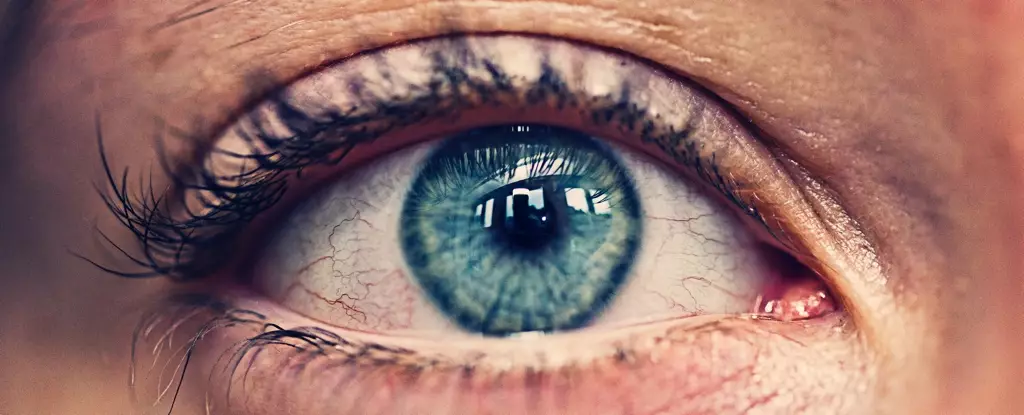As the world grapples with the dire consequences of climate change, one alarming effect remains largely underreported: its impact on ocular health. The case of Alka Kamble, a 55-year-old farmworker from Maharashtra, India, starkly illustrates how environmental conditions can infiltrate our very vision. Kamble’s extended exposure to the scorching sun while laboring in the fields led to cataracts, a condition that affects millions globally and can render individuals blind if untreated. Despite her poor eyesight, Kamble initially refrained from seeking medical help due to financial constraints and long working hours, pivotal barriers faced by many in vulnerable employment.
It’s a scandalous reality that individuals in labor-intensive professions like agriculture can find themselves fighting for survival while simultaneously suffering the degradation of their health—both physically and visually. Kamble’s eventual cataract diagnosis sets the stage for a broader dialogue about how hazardous conditions, fueled by climate change, threaten the basic tenets of human health. The alarming truth is that the lessons learned from Kamble’s struggles extend far beyond personal suffering; they resonate within the global narrative of climate-related health deterioration.
Rising Temperatures: A New Player in Eye Diseases
The role of increasing temperatures in exacerbating eye conditions cannot be ignored. According to Lucía Echevarría-Lucas, an ophthalmologist in Spain, elevated body temperatures—especially those reaching 40 degrees Celsius (104 degrees Fahrenheit)—can trigger heatstroke, which in turn hampers biological processes crucial for eye health. This is particularly troublesome as scientists have established a direct link between heat exposure and cataract development. A study conducted in southern Spain revealed that for every degree Celsius rise in maximum average temperature, there’s a corresponding increase in cataract cases.
The ramifications are especially critical for agricultural communities where individuals often work outdoors for extended periods. With climate change making such work conditions increasingly hazardous, the discrepancy in eye health between different demographics is likely to widen. Young and otherwise healthy laborers, such as those in the agriculture sector, face growing risks, leading to eye ailments typically associated with aging populations.
UV Radiation: The Invisible Assailant
Apart from heat exposure, climate change escalates the risks associated with ultraviolet (UV) radiation. Behavioral patterns during warmer months naturally lead individuals to spend more time outdoors, inadvertently increasing UV exposure. Additionally, in certain geographical areas like Southern California and Southern Spain, dry winds exacerbate UV conditions by removing moisture from the atmosphere, allowing UV rays to penetrate more deeply. Experts note that these rays result in the generation of reactive oxygen species, threatening the integrity of the eye lens.
The combination of increased outdoor activity during hotter days and heightened UV exposure paints a daunting scenario for eye health. Beyond cataracts, conditions such as keratitis and conjunctivitis are rising; these “silent” afflictions are exacerbated by factors tied directly to environmental changes, necessitating an urgent public health response.
Broader Health Implications: Food Security and Nutritional Deficiencies
To add another layer of complexity, climate change indirectly contributes to nutritional deficiencies that can impact ocular health. Drought conditions and erratic weather patterns lead to food insecurity, reducing the availability of vital nutrients like copper and various B vitamins critical for maintaining optic nerve health. The risk posed by unsafe drinking water further exacerbates conditions conducive to eye infections, highlighting the multifaceted nature of climate-related health issues.
The implications stretch far beyond a single demographic; they encompass entire communities. Health disparities rooted in access to nutritious food become more significant amidst climate-induced crises. As policy frameworks tighten around climate action, we must advocate for integrated approaches that consider agricultural productivity, nutritional availability, and healthcare access as entwined within the climate dialogue.
Immediate Solutions to Mitigate Eye Damage
While the threats posed by climate change on eye health are significant, immediate strategies can be adopted to protect vulnerable populations. Experts urge agricultural workers to seek adequate shade, promote frequent breaks for hydration and cooling, and utilize proper eye protection. Essential solutions could include hats equipped with visors and UV-filter sunglasses, both of which have been shown to provide substantial protective benefits.
Emphasizing dietary richness in vitamins A, C, and E, along with avoiding harmful substances like tobacco and alcohol, further bolsters individual defenses against climate-induced eye ailments. However, such personal strategies must be complemented by broader systemic changes. Global efforts aimed at reducing greenhouse gases and improving healthcare accessibility are critical to ensuring that those most affected—like Kamble—can receive timely interventions that are not only lifesaving but life-enhancing.
In this fight against the evolving challenges of climate change, we must recognize that our health, especially our eye health, is intricately interconnected with the environment we sustain. As the climate crisis deepens, protecting our vision and overall wellness has never been more urgent.


Leave a Reply